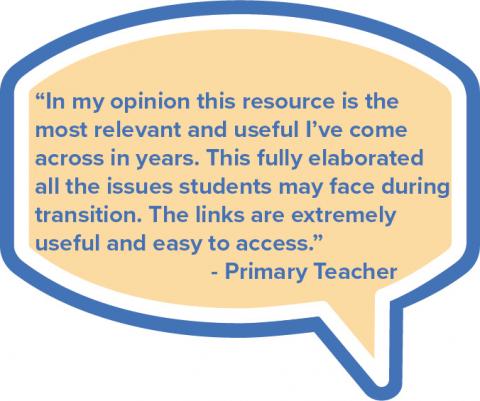Summary

Findings from the literature review are complex and indicate that there is no simple answer to the challenge of school transition.
At an individual level, the transition process affects some students more than others and will affect some students in different domains, for example, some students may transition well academically but struggle socially.
The environmental scan found a range of resources in the school transition domain. The main opportunities for building upon these existing resources included:
- clearly bringing the student voice to the forefront of resources;
- ensuring resources are immediately transferable to the classroom context; and
- ensuring the resources are useful for all stakeholders – students, teachers, parents and carers, families – in the school transition process.
The Student Forums research confirmed many of the elements that were already noted in the academic literature, but particularly elevated the student voice in defining Australian students’ main challenges and the mode in which they wish to address those challenges.
Transferring research to practice
Given the complexity of any class cohort, a solution at this point – where individual teachers are responsible for students in their class – is to make transition support resources explicit, able to be differentiated, and coherent across audiences. This allows for the transition process to be demystified, it provides opportunities for students to access information they need, and allows students, teachers and parents and carers to share their understandings and seek further solutions.

While success markers can be identified – for example, academic outcomes, social or emotional wellbeing outcomes, or operational skills – these would need to be monitored at the school and individual level to allow tailored interventions for students as needed.
It is with these intentions that the Life Ed Guide to Thrive school transition resources have been designed and created. That is, to provide a suite of explicit, inclusive, and coherent resources that can be used by students, teachers, and parents and carers in order to ease the transition from primary to secondary school.